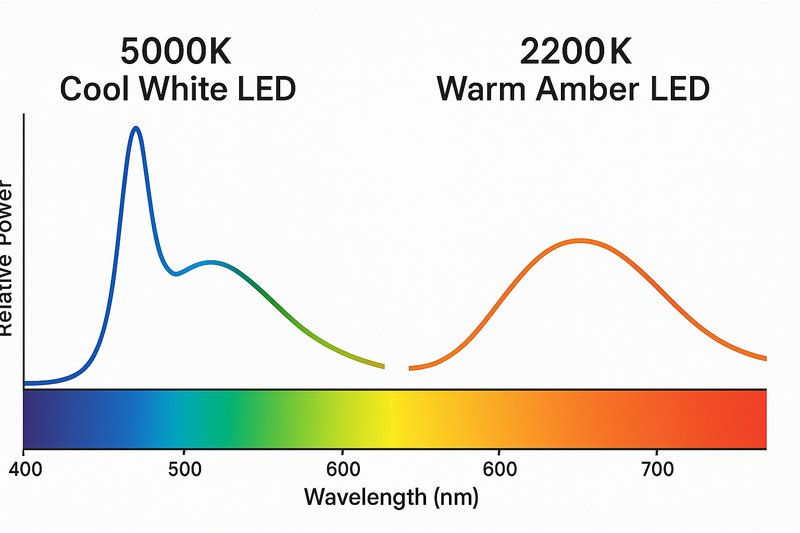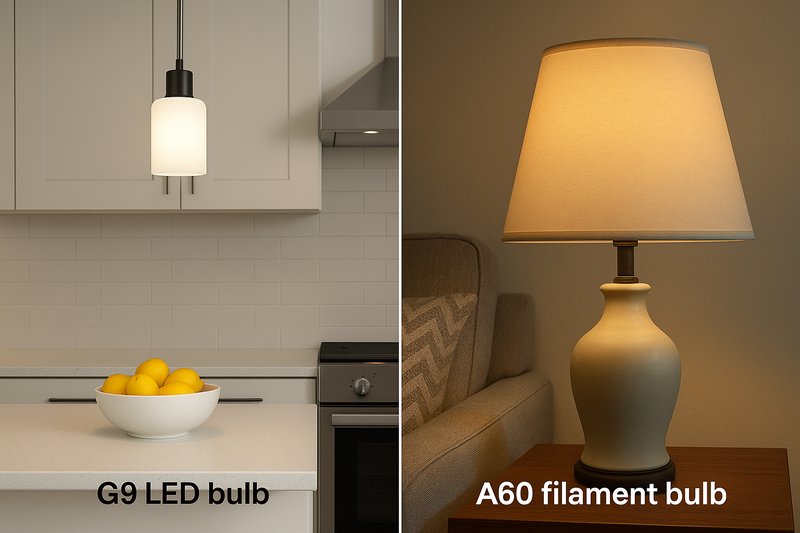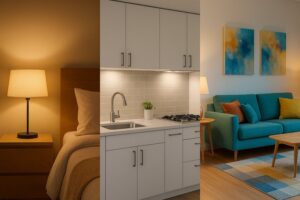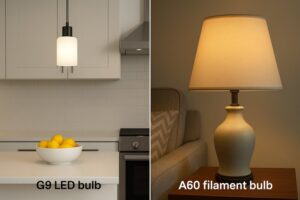You prioritize health and well-being, but a good night's sleep remains elusive. This nightly struggle impacts your energy and focus, despite you doing everything else right.
Yes, the color temperature of your lights directly affects sleep. Warm light (under 3000K) signals your brain to produce melatonin, promoting sleep. Cool, blue-rich light (above 4000K) blocks this hormone, keeping you awake and alert.

I was speaking with a product manager for a large U.S. retailer, "Jacky," who focuses on home goods. He told me, "Wallson, our customers are getting smarter about wellness. They buy organic cotton sheets and blackout curtains, but they're still tired." He was looking for a new angle, a product that offered a real solution. I told him the answer was probably hanging right over his customers' heads. We've spent decades engineering the perfect light for the day, but we forgot to engineer the right light for the night. That conversation shifted his entire strategy for bedroom and living room lighting.
How Can a Simple Color Change So Deeply Affect Our Biology?
You see the "Kelvin" (K) rating on a bulb box, but it just seems like a technical number. Without understanding what it means for your body, you can't confidently sell or specify the right product for different environments.
Your eye has a special sensor that isn't for seeing; its only job is to detect blue light. When it detects blue, it tells your brain it's daytime, shutting down the production of melatonin, the natural hormone that makes you feel sleepy.

This is one of the most fascinating pieces of human biology, and it's something we work with every day at Omita when designing our bulbs. For thousands of years, the sun was our only powerful light source. Its light is packed with blue wavelengths, which kept us alert and active. At sunset, the light becomes warm, orange, and red, signaling our brains to start producing melatonin to prepare for sleep. This is our natural circadian rhythm. The problem is that many modern LED bulbs, especially those with a high Kelvin rating (4000K or more), are designed to mimic daylight. They emit a strong peak of blue light. This is fantastic for an office or workshop where you need to be focused. But when you use that same light in your living room or bedroom in the evening, you're sending your brain a powerful, confusing signal: "It's noon! Wake up!" even when it's 10 PM.
The Kelvin Scale and Your Sleep
| Color Temperature (Kelvin)1 | Common Name | Blue Light Content2 | Effect on Melatonin | Best Use Case |
|---|---|---|---|---|
| 5000K - 6500K | Daylight / Cool White | Very High | Strong Suppression | Warehouses, workshops, task areas where alertness is critical. |
| 4000K | Neutral White / Cool White | High | Significant Suppression | Offices, kitchens, bathrooms, areas for focus and activity. |
| 3000K | Soft White | Moderate | Mild Suppression | Can be used for general lighting, but not ideal for evening relaxation. |
| 2700K | Warm White | Low | Minimal Suppression | Excellent for all living areas and bedrooms. Promotes relaxation. |
| 2200K | Amber / Vintage Glow | Very Low | No Suppression | The absolute best choice for bedside lamps and evening accent lighting. |
How Do You Choose the Right Color Temperature for Different Rooms?
You need to source lighting for a whole project, from bedrooms to kitchens. Using one single color temperature is easy, but it creates spaces that feel wrong—a bedroom that feels sterile or a kitchen that feels dim.
Match the light to the room's main purpose. Use warmer light (2200K-2700K) in relaxation spaces like bedrooms and living rooms. Use cooler, brighter light (3000K-4000K) in task-oriented spaces like kitchens and home offices.

As a buyer or product manager, guiding your customers to make these choices adds huge value. It shows you understand not just the product, but the human experience of light. Here at Omita, we manufacture a wide range of color temperatures for precisely this reason. Here is a practical guide we share with our clients.
The Bedroom: A Sanctuary for Sleep
This is the most critical room for sleep health3. All lighting here should be on the warm end of the spectrum. General overhead lighting should be no cooler than 2700K. The most important lights are the bedside lamps, which are the last lights you see before sleep. For these, we strongly recommend our 2200K Amber Glow LED filament bulbs4. They provide a beautiful, calming, firelight-like glow with almost no sleep-disrupting blue light.
The Living Room: Transitioning to Rest
This space is for both socializing and winding down. A layered approach works best. The general ceiling light can be a versatile 2700K or 3000K. However, floor lamps and table lamps used for evening reading or relaxation should always have warm bulbs5, ideally 2700K or less6. This allows the user to switch from "day mode" to "evening mode" without leaving the room.
The Kitchen and Bathroom: For Alertness and Tasks
These are functional spaces where you need clear visibility. A cool color temperature here is beneficial, especially in the morning as it can help you wake up. We suggest using our G4 and G9 bulbs in 3000K or 4000K for under-cabinet and vanity lighting. This provides crisp, clean light that makes tasks like cooking or grooming easier and safer.
A Room-by-Room Lighting Guide
| Room | Primary Activity | Recommended Kelvin7 | Why It Works for Sleep | Our Product Suggestion |
|---|---|---|---|---|
| Bedroom | Sleep, Relaxation | 2200K - 2700K | Creates a calming environment and minimizes melatonin suppression8 for better sleep. | Omita A60 Filament 2200K |
| Living Room | Unwinding, Socializing | 2700K - 3000K | Layered light allows a transition from day to night, promoting evening relaxation. | Omita G95 Filament 2700K |
| Bathroom | Grooming, Waking Up | 3000K - 4000K | Provides clear, crisp light for tasks and helps signal "wake up" in the morning. | Omita G9 LED 4000K |
| Kitchen | Cooking, Tasks | 3000K - 4000K | Ensures good visibility for safe food preparation and activity. | Omita G4 LED 4000K |
Conclusion
Choosing warm LED light below 3000K for evening use is a simple, powerful strategy to protect sleep quality. It is an essential detail for modern, healthy, and high-quality spaces.
-
Understanding color temperature can help you choose the right lighting for better sleep quality. ↩
-
Exploring blue light's effects can guide you in managing your exposure for improved sleep health. ↩
-
Explore the importance of sleep health and its effects on your physical and mental well-being. ↩
-
Discover how these bulbs can enhance your sleep environment with their calming glow and minimal blue light. ↩
-
Explore the advantages of warm bulbs for creating a cozy atmosphere in your living room. ↩
-
Learn why 2700K or less is ideal for relaxation and comfort in your living space. ↩
-
Understanding Kelvin temperatures can help you choose the right lighting for each room, enhancing comfort and functionality. ↩
-
Exploring the relationship between light and melatonin can improve your sleep quality and overall health. ↩








